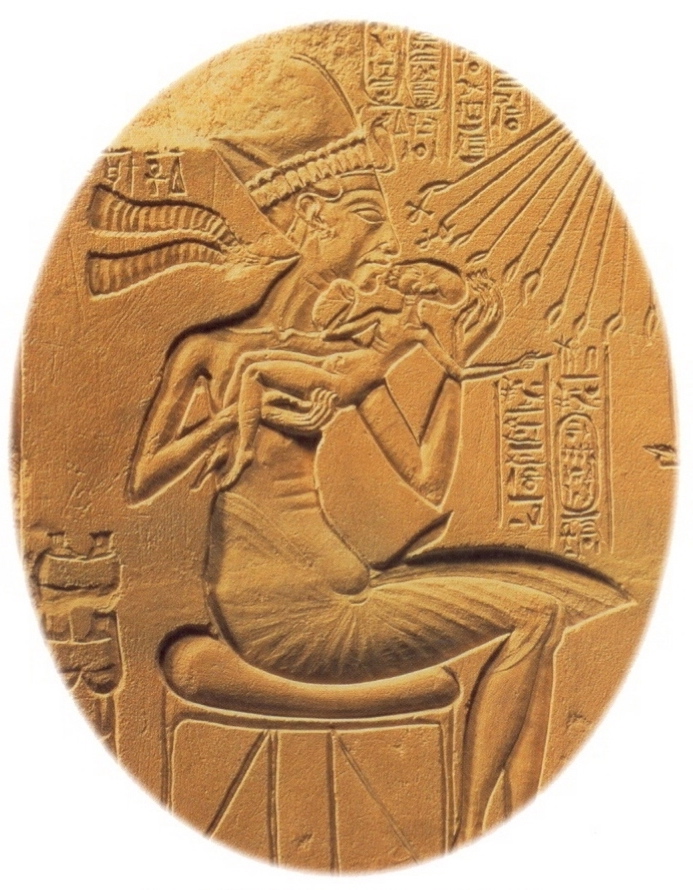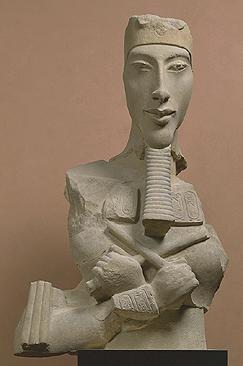|
After Akhenaten
It appears Akhenaten had a co-regent in his later years called Smenkhare (c. 1337 to 1134 BCE), though his true identity is
in question. In any case, Smenkhare was sole ruler for less than a year, and a nine-year-old boy of unknown parentage known
as Tutankhaten succeeded him. Tutankhaten changed his name to Tutankhamun and moved his court to Thebes, restoring the worship
of Amun and other gods familiar to the general population. The city of Akhetaten was abandoned, some of Akhenaten's monuments,
reliefs, and statuary were defaced, and his name expunged both at Akhetaten and Karnak. Eventually there was an apparent campaign
to erase the recent past, including monuments of Akhenaten, Tutankhamun, and his successor Ay. These three were all expunged
from the list of pharaohs. By the time of Ramesses I and the 19th Dynasty (c. 1292 BCE), all traces of Akhenaten and his reforms
had virtually disappeared.
Never before or since had such wholesale obliteration been carried out by Egyptian rulers. As a result, the cause of the
deaths of Nefertiti, Akhenaten, Smenkhare and Tutankhamun are uncertain, as is the location of the mummies of Nefertiti and
Akhenaten. It is believed that Smenkhare's mummy is in Tomb 55 in the Valley of the Kings, and, of course, Tutankhamun's tomb
was discovered intact in 1922, which is something of a miracle.
  |

